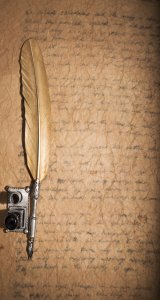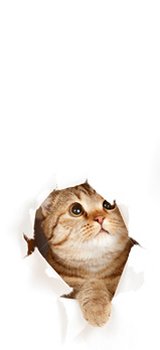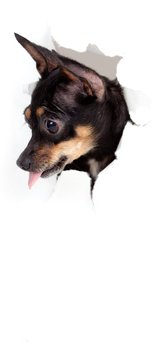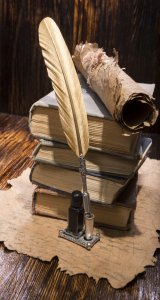Heraldry in the Crafts--Why Not Specialize?
I have a small website where I try to sell custom-made lapel buttons. In addition to these made-to-order buttons I also offer several specialty lines of off-the-shelf items and at this time of year I'm usually concerned with one of those lines in particular: Irish heraldic buttons. St. Patrick's Day approaches.
I'm in no sense an expert on heraldry. Still, although there are many button sites like mine I'm not aware of any other with a line of products like that one and I don't know why that should be true. It struck me the other day that heraldry might offer a wide range of opportunities for specialization--and to craftspersons in almost any field from pottery to needlepoint to weaving, rugmaking, and even quilting.
It's true that we no longer live in the age of chivalry and that not all Americans are caught up in the study of their ancestry and ethnic heritage, but surprisingly many of us are. For example, Overture reports that in November of 2004 the exact phrase "Irish heraldry" was searched for on the web 140 times. Note that this doesn't include possible searches for related terms like Gaelic, Celtic, shields, crests, coats of arms, etc. And it says nothing at all about searches for heraldic information from any other part of the world or for heraldry in general. As a matter of fact, during the month of November the word "heraldry" was used in 11,869 searches, so it seems that a market may well exist.
On the other hand, heraldry may be considered a rather nerdy topic in the modern world. I've noticed that many people today fall below the snuff-line when it comes to their basic knowledge of heraldry. There's no reason why they should know anything about it if their objective is merely to copy an occasional coat of arms onto some products that they've made, like, for instance, some dinner plates or a sampler. Yet a few paragraphs of information about coats of arms may be interesting to any who can see the possibilities in the use of heraldic themes as a quasi-specialty in their work.
A discussion of heraldry must begin, first and foremost, with the idea of the shield. The shield, I would guess, is probably the oldest piece of weaponry other than the club. The earliest shields were made of tough skins stretched over wooden frames. Their shape was probably roundish, and the round shield served very well at least through the days of the Roman Legions.
As body armor grew more cumbersome, it became more and more difficult in the heat of hand-to-hand combat to determine who was who. An early step towards solving this problem came when warriors began painting identifying symbols on their shields. By the time of the Middle Ages these symbols were becoming strictly codified and proprietary. The persons charged with keeping track of them were high government officials called heralds and a technical language, something that looks to us today like a strange mixture of English and French, was growing up around them to describe them.
In all probability this language was really not strange at all, but very similar to the ordinary speech of the times, that is, the period after the Norman conquest of England. Yet people who discuss heraldry seriously still use these terms today, and that is no doubt one more reason why the study is no longer cool. It should of course not be obligatory to use "or" for gold or "vert" for green when writing in modern English, but that's how they insist on doing it.
To satisfy a herald, a full "coat of arms" had to include many things besides the basic shield. By the time that the practice of heraldry had spread throughout Europe a coat of arms included at least the shield, the motto, the helm, the wreath, the crest, the mantling, and possibly several other things as well.
Surprisingly, the shape of the shield didn't seem to matter much. Books on heraldry often show ten or fifteen different common shapes. And not every heraldic shield was even intended to resemble an actual shield from the field of battle. The right to a coat of arms, for example, was often granted to females, and the shield in such cases was typically drawn as a lozenge or diamond-shaped object. Many shields such as the so-called "jousting" shields are sometimes drawn as crazy, free-form, asymmetric shapes.
Very often a shield's area was divided, maybe to signify the merging of two powerful families. In such cases, all the charges (pictures, or "bearings") shown on both original shields would usually be retained, each group confined to its own partition of the merged shield. There were, naturally, technical terms for any number of different ways to divide the area of a shield: per pale, per fess, per chevron, per saltire, etc. There were even different stylized lines used to separate the segments. A simple straight line might do the trick, but it could also be "engrailed," "embattled," "indented," "wavy," "dovetailed," etc.
As for the charges, they merit a separate treatment. They include not only lions and eagles in various poses, but a wide variety of birds, mammals, fish, and mythological beings. Parts of the human body. The sun, the stars, and many forms of vegetation. Structures and ships, books and bells. And each of them has its own specialized meaning. For instance, a dragon stood for vigilance, a snake for wisdom, a boar for a fierce fighter, a swallow for someone who had been dispossessed of land. A cross might indicate that the bearer or one of his ancestors had fought in the crusades, and the arms of a sailor would often show a ship.
As is obvious from those few examples, the meaning of some charges still make at least some sense to us, while in other cases their meaning is baffling. Different kinds of crowns can indicate different ranks of nobility; that's logical enough. But a finger ring, for instance, might symbolize a fifth son, and a tower might stand for wealth.
Heraldry is a colorful topic in every sense. One continually runs into larger-than-life characters. Here's one, chosen more or less at random:
Sir Francis Drake was definitely a sailor, and his arms definitely showed a ship. And what a ship! Most ships that I've seen in heraldic designs seem to have one mast but this one has three. There's a dragon or griffin seated in the stern with wings outspread. The ship rests atop a large globe of the world showing us the Atlantic Ocean, and above the ship a hand emerges from a cloud pointing at the ship something that looks very much like a microphone plugged into the bow. (I don't know what it is.)
All of that constitutes merely the crest and, as is to be expected, the crest is resting on a wreath and the wreath is above the helm. Below the helmet we finally reach the shield, an amazingly simple shield, given the complexity of its surroundings: on a black background, a silver wavy fess (horizontal area) represents the sea between two wavy stars representing the pole stars. The whole thing commemorated Drake's circumnavigation of the earth in 1577.
These arms were granted to Francis Drake by Elizabeth I, but he seems to have been a fairly headstrong individual and kept adding bits and pieces to which he had no real right. This tendency got him into a long feud with an unrelated Drake family from whom he swiped elements for his own arms. (In fact, he did that twice. After the other family had successfully defended its claims against him and he had removed the offending bearings from his arms, he later decided to put them back where they didn't belong.)
All of the major online bookstores have, or can locate, many pages full of books on heraldry, from modern works to out-of-print classics and intended for experts or beginners.
Jim Donnelly is based in Fresno, CA. He offers to produce pin-back lapel buttons of any description at all, with any photo or drawing and any wording that will fit and that doesn't include treason. You can sign up for his free newsletter on the home page of his website, http://www.badgecrafters.com
|
|
|
|
|
|
|
|
|
|
|


Family, Incest, and Law
Family Values in Ancient Times:Many people of the present make... Read More
The Masked Fool
The FoolMy first direct experience of the fool in masking... Read More
Mexican Living: The Unexplained
The inexplicable bothers me. It always has. You know, the... Read More
The New Age Movement
New Age - A Paradigm Shift to Divine Consciousness &... Read More
The History of Body Piercings - Ancient and Fascinating Around the World
Body piercings have seen a resurgence of interest in the... Read More
Tarot Cards Demystified: The Suit of Cups
There are many ways to interpret the symbolism found in... Read More
Mythology and Parables in Modern Communication - Part 1
Today there is a growing need to examine all our... Read More
Some Villain Thoughts About a Container Village
Preview: "Shipping containers" have yet nothing to do with "housing"... Read More
Is America Still Racist?
This is one entry in my Heroes and Villains Volume... Read More
Gold Jewelry -The Rest of The Story
Gold is one of the metals taken from the earth... Read More
A Short Biography on Some of Europes Most Loved and Hated Monarchs - Pt 1 Vlad Tepes (Dracula)
Vlad Tepes or Dracula was born in 1431, in the... Read More
Return to Ouvea, New Caledonia
"Ouvea is everything you'd expect in a South Pacific island.... Read More
Europes New Jews
They inhabit self-imposed ghettoes, subject to derision and worse, the... Read More
Marilyn Monroe and Mary Jo Kopechne
I doubt Marilyn Monroe was anything but a confused star-struck... Read More
Your Souls Purpose Is Found In the Zodiac
Of course, science has explained this to us, and we... Read More
Timbuktu and Brotherhood Too
Juba II in America:Ahmed Osman tells us about the destruction... Read More
Jewelry Making for Fun and Profit
There is an old adage that says work isn't really... Read More
Birthstone Jewelry Beliefs and Celebrity Birthdays
Wearing birthstone jewelry is very popular today. Not only is... Read More
Christopher Columbus
CHRISTOPHER COLUMBUS: - It seems a mystery to most academics... Read More
Gymnastics History ? A Brief Overview
Gymnastics, as an activity, has been around for more than... Read More
Ogham and Aymara
OGHAM:As any reader of my work knows by now, Ogham... Read More
When We Was Kids In Chicago
Radio was the big communicator, back when I was a... Read More
Debussy and Gamelan According to a 150 Year Old Man
Hello!If you haven't been transported by the mesmerizing sounds of... Read More
Mexican Living: Issues of Life
This morning when I got out of bed, I had... Read More
The Contingencies of Despair: How Existentialists Survive
~ Dread is dizziness unto freedom-freedom that gazes down into... Read More
Leonardo Da Vinci
THE BICYCLE OF LEONARDO DA VINCI: - "? a man... Read More
Understanding Astrological Predictions
Opinions about astrological prediction are generally divided: "Mysterious! Magical!", say... Read More
My Introduction To Northwest Coast Native American Art
I had lived in Vancouver very briefly as a child... Read More
Druidic University
MEGALITHIIC POWER PLANTS:Druidic University:Long before there was a Rome or... Read More
Astrology : A Science or Superstition?
Human beings have always been curious to know their future.... Read More
Arthur Koestler
ARTHUR KOESTLER:Humanitarian, historian and scientist are just a few of... Read More
Bad Mouthing Fellow Authors
The creative mind is a gift to humanity; but unfortunately... Read More
Elvis Presley, Lifting Off
He seems to live forever. A network television movie about... Read More


Man and His Machines
A woman creates life from her womb, and man tries... Read More
The Origin of Americas Corporate Elite (BC)
Ephesus had a shrine to the Anatolian mother-goddess and the... Read More
Astrology : A Science or Superstition?
Human beings have always been curious to know their future.... Read More
Accurate Psychic Advice
Psychic readings can be an invaluable tool for obtaining answers... Read More
Tarot Cards Demystified: The Suit of Pentacles
There are many ways to interpret the symbolism found in... Read More
OM to Ogham
Plato observed that the advent of an alphabet making writing... Read More
The American Melting Pot Myth
Most myths have some element of truth in them. The... Read More
From Dynasty to Destiny: Ten Celebrated Inventions of Ancient China
In the last two centuries, new cultural discoveries have nearly... Read More
The Power of Words
I freely confess that I have had a life-long love... Read More
Creating a Virtual Art Gallery
To the online artist, it might seem a paradox, at... Read More
Marcus Garvey: A Symbol for Black Nationalism
My first kid's father named my son Marcus after legendary... Read More
Carly Patterson: What Makes A Champion?
If you have been following gymnastics for any length of... Read More
How to Clean Your Civil War Uniform
How necessary is cleaning your Civil War Uniform?The every day... Read More
Gold Jewelry -The Rest of The Story
Gold is one of the metals taken from the earth... Read More
Zorro
ZORRO:Timon of Athens. But most often they wrote in code... Read More
Game Theory - What Do Game Theory and Improv Theater Have in Common?
"Game" TheoryThis article was inspired by Mick Napier's book ?Improvise:... Read More
Hello I Must Be Going: The Vanishing Twin
They walk among us. By the mid nineties, science had... Read More
Violence
Flashes of memory stream into my consciousness. They take me... Read More
Native American Life After Prophetstown
My name is Luksi Humma, I am Choctaw or, Chahta,... Read More
Eminem Slimshady
Firstly revealed by the fable Dr.Dre, and then debut of... Read More
ML - CHI - Zadok and the Making of Gold
ATOMIC HIGH-SPIN TECHNOLOGY: - In 1950 B.C. there was a... Read More
A Short Biography on Some of Europes Most Loved and Hated Monarchs - Pt 1 Vlad Tepes (Dracula)
Vlad Tepes or Dracula was born in 1431, in the... Read More
Tribal Tattoo Designs - Why Are They So Popular?
Tribal tattoos have been practiced for thousands of years. Modern... Read More
Medieval Siege Weaponry: Castle Walls Beware
Medieval siege weaponry was required in any self-respecting war leader's... Read More
Authenticity of Eskimo Inuit Art & Native Indian Art
Both Inuit Eskimo art and Native American art have gained... Read More
A Hidden Oriental Jewel: 100% Chinese Hand-Made Silk Embroidery
IntroductionDo you know what "silk embroidery is? Do you know... Read More
Are You Embarassed by Your Civil War Uniform Impression?
"Authentic," "authentic," "authentic" is all you hear if you are... Read More
The Saga of Puffed Wheat Anderson, A Minnesota Legend
I have no idea how old I was when I... Read More
Jewelry Making for Fun and Profit
There is an old adage that says work isn't really... Read More
Heraldry in the Crafts--Why Not Specialize?
I have a small website where I try to sell... Read More
Birthstone Jewelry Beliefs and Celebrity Birthdays
Wearing birthstone jewelry is very popular today. Not only is... Read More
Ancient Philosophy On The Internet Can Change How We Think
Here I am again sitting at my computer, my job... Read More
The Daily Show is a Must See on Comedy Central
Doesn't it seem that today there is nothing but bleak... Read More
Humanities |